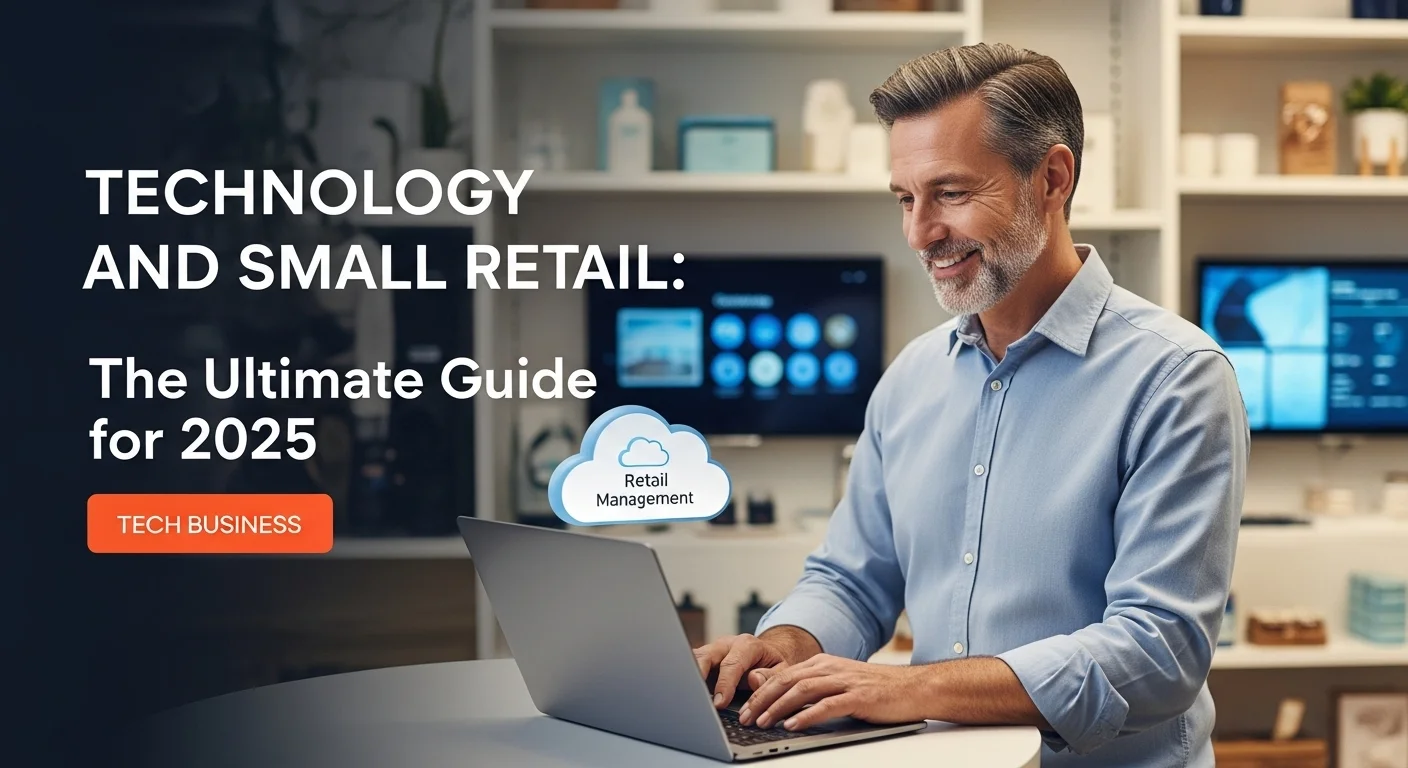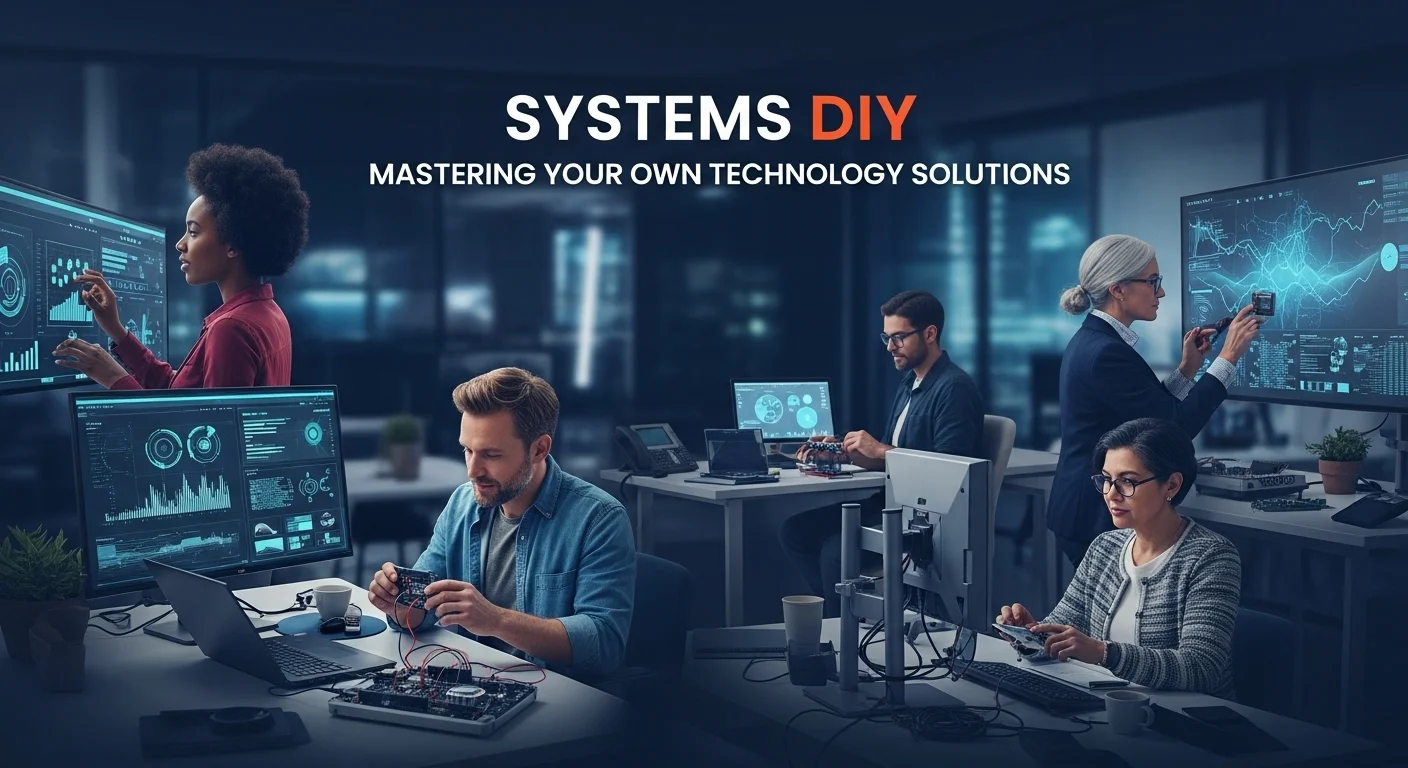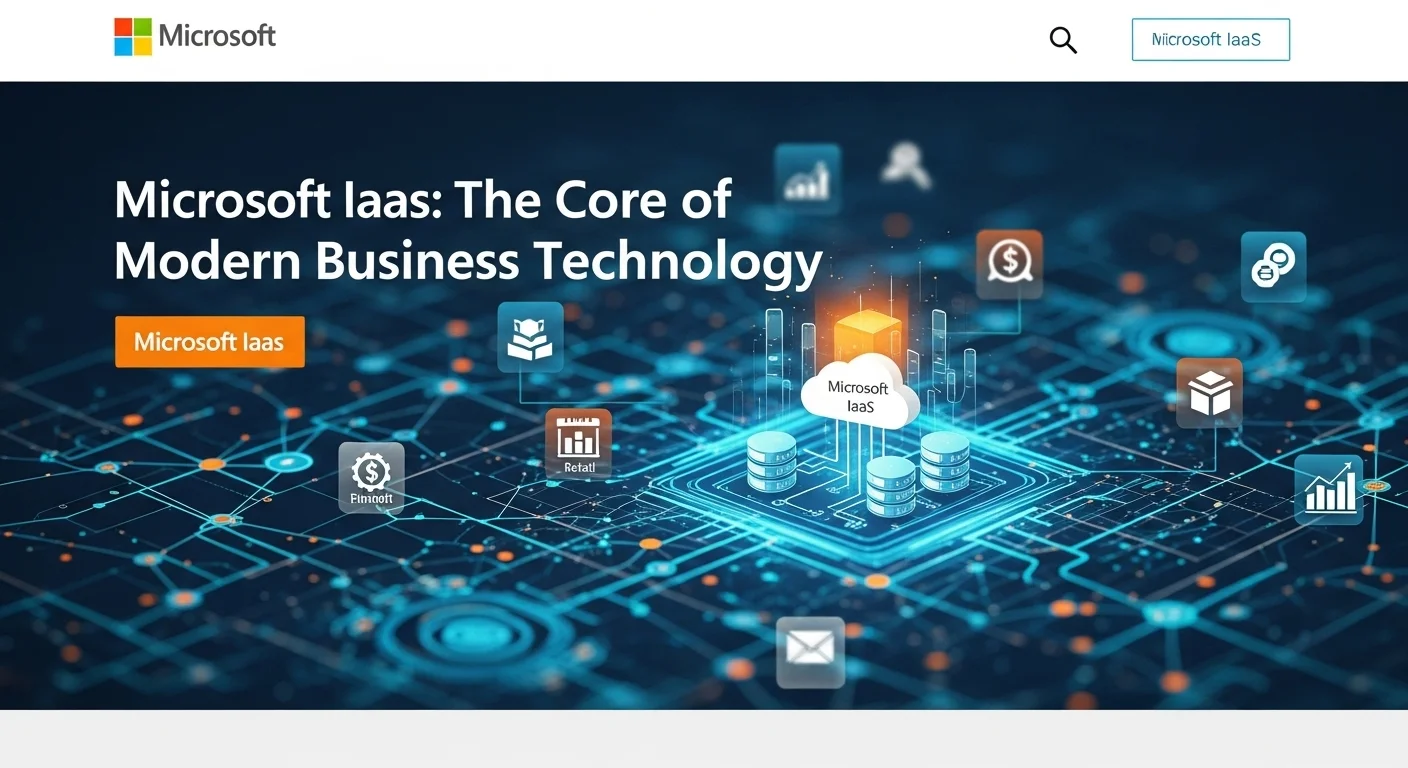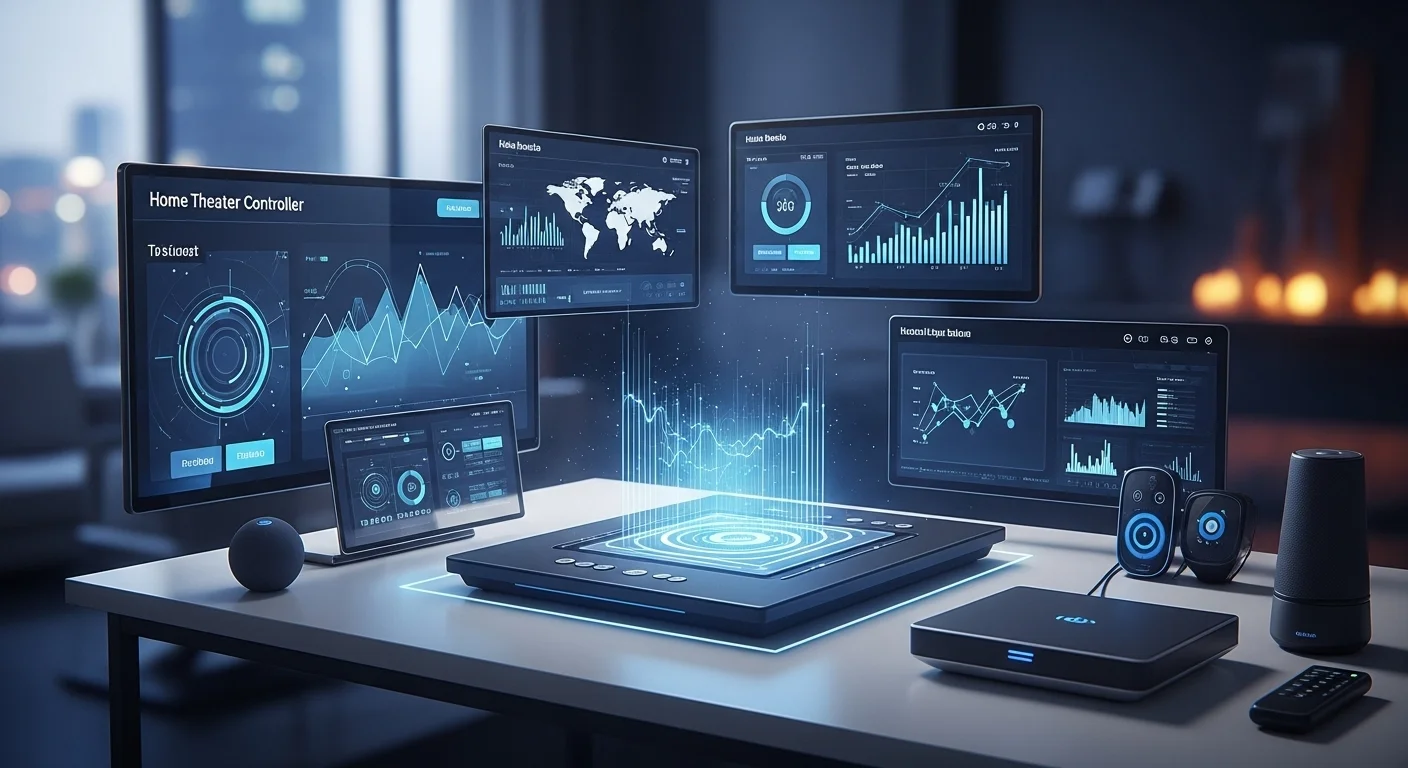How Technology Can Transform Your Small Retail Shop: A 2025 Guide to Thriving

Executive Summary
In my years of working with entrepreneurs, I've seen the incredible passion that goes into running a small retail shop. It's the heart of our communities. But today, passion alone isn't enough. Technology has shifted from a 'nice-to-have' luxury to the essential toolkit for survival and growth. This isn't about turning your charming boutique into a cold, robotic warehouse. It's about using smart, accessible tools to handle the tedious stuff so you can focus on what you do best: connecting with your customers. In this guide, I'll walk you through how things like artificial intelligence, cloud-based tools, and modern sales systems can help you create amazing customer experiences and protect your hard work. We'll look at real-world examples and practical ideas, whether you're in a bustling city or a small town, to help you build a resilient business that's ready for the future.
Table of Contents
Table of Contents
What is Small Retail and Why Does Technology Matter?
Let's talk about small retail. To me, it's the heart and soul of our local economies. We're talking about the independent businesses that give our towns and cities their unique character—the neighborhood boutique, the specialty hobby shop, the corner grocer, or the artisan market. These shops are run by our neighbors, and they offer a personal touch that big corporations just can't match. But being small also comes with big challenges, especially now when customers expect the convenience of online giants. This is where technology steps in, not as a threat, but as your most powerful ally.
Honestly, I can't stress this enough: technology is no longer optional. A few years ago, a great product and a friendly smile were the keys to success. Today, customers want a smooth experience from the moment they discover you on their phone to the final purchase in your store. Technology is the great equalizer. It gives small businesses the tools to compete, streamline their work, reach more people, and truly understand their customers. A smart tech strategy can turn a local gem into a booming business with a devoted following.
A Partnership Where Both Sides Win
Technology and small retail are in a fantastic partnership where each helps the other grow. New tech creates incredible opportunities. Just look at Instagram and Pinterest. These platforms have launched countless small businesses, allowing someone with a great idea for handmade jewelry, for example, to build a global brand from their kitchen table. A simple small retail shop idea can now reach far beyond the local neighborhood.
At the same time, the specific needs of small retailers inspire tech companies to create better, more affordable tools. Think of user-friendly website builders, powerful point-of-sale (POS) systems that run on a tablet, and simple marketing tools. This means you don't need a huge budget or a degree in computer science to use powerful technology. It's all about finding the right tools that fit your business and your budget.
The Key Tech Building Blocks for Your Shop
To really get a handle on this, let's break down the essential tech you should be thinking about:
- Your Digital Front Door (E-commerce): Your online store is your 24/7 salesperson. It's non-negotiable. Platforms like Shopify or BigCommerce make it surprisingly easy to set up a beautiful, professional online shop. This is especially vital for businesses in smaller towns, as an online presence can dramatically expand your customer base beyond local foot traffic.
- Your Command Center (Point of Sale System): Forget the old cash register. A modern POS system is the brain of your business. It handles sales, tracks every item in your inventory, manages customer info, and gives you simple reports that show what's working and what's not. It's invaluable for making smart decisions.
- Stress-Free Stocking (Inventory Management): Having too much stock ties up your cash, and too little means lost sales. I've seen so many owners tear their hair out over this. Technology takes away the guesswork. Inventory software can track stock, forecast demand, and even automate reorders, freeing you up from endless counting.
- Building Real Relationships (CRM): Small retail is all about relationships. A Customer Relationship Management (CRM) tool is just a digital way to keep track of those connections. It remembers a customer's purchase history and preferences, so you can send them a personalized birthday offer or let them know when their favorite item is back in stock.
- Getting the Word Out (Digital Marketing): How do new customers find you? Increasingly, it's online. Digital marketing includes everything from making your website show up on Google (SEO) to engaging with customers on social media. The best part? You can track everything. Tools like Google Analytics show you exactly what's working so you don't waste a penny of your marketing budget.
Real-World Examples That Will Inspire You
Let's look at how this plays out in the real world. Many successful small retail business examples show just how powerful this can be.
Imagine a specialty bookstore in a small town. Ten years ago, its market was limited. Today, with an e-commerce website, it can sell to book lovers across the country. By hosting virtual book clubs on social media, it builds a community that's not defined by geography. This is a perfect example of a classic business thriving with new tools.
Or think about a pop-up clothing boutique. It's a fantastic, low-cost way to test a business idea. Technology is what makes it possible. A mobile POS on a smartphone handles payments anywhere. Social media creates buzz and announces the location. The pop-up event builds an initial email list, and the business can continue selling online long after the event is over.
In the end, technology isn't something to fear; it's something to embrace. It's the engine that drives your efficiency, the megaphone for your marketing, and the crystal ball for your business insights. By choosing the right tools, you can turn your brilliant ideas into a profitable, lasting business.
Real-world examples and practical ideas, whether you're in a bustling city or a small town, to help you build a resilient business that's ready for the future.

Your Tech Toolkit: A Practical Guide to Business Solutions
Alright, let's get our hands dirty. I know that looking at all the available technology can feel overwhelming. Which platform is right for you? What tools are worth the investment? This section is your practical guide. We'll break down the specific solutions that can genuinely transform your shop and turn those great small retail business ideas into successful realities.
Choosing Your Online Storefront: E-commerce Platforms
Your e-commerce platform is the foundation of your digital strategy. It’s where you’ll manage products, take orders, and interact with customers online. The choice you make here will affect how easily you can grow and run your day-to-day operations.
My Take on the Key Platforms:
- Shopify: If you're just starting and the tech side of things feels a bit intimidating, Shopify is like a trusted friend. It's an all-in-one system, meaning they handle all the technical headaches for you. It's incredibly user-friendly, has a massive app store to add features, and makes taking payments simple. It's my go-to recommendation for getting started quickly and painlessly.
- BigCommerce: Think of BigCommerce as Shopify's powerful cousin. It's also an all-in-one solution, but it comes with more features built-in right out of the box. If you have a large or complex catalog of products, BigCommerce can be more cost-effective in the long run since you won't need as many paid apps.
- WooCommerce: If you're comfortable with technology and want complete creative control, WooCommerce is your playground. It's a free plugin for WordPress websites, offering endless flexibility. The trade-off is that you're in charge of your own website hosting, security, and maintenance. It's the best option for DIY entrepreneurs who want a truly custom store without a monthly platform fee.
- Squarespace and Wix: These platforms are famous for their stunning, designer-made templates and easy drag-and-drop editors. If your brand is highly visual—like an art gallery or a fashion boutique—these are fantastic choices. Their e-commerce tools are strong and perfect for businesses with more curated collections.
A Quick Tech Tip:
When you're choosing, think about the future. Does it integrate with the payment and shipping services you want to use? And most importantly, test it on your phone! So much shopping happens on mobile devices, and a clunky mobile experience is a guaranteed way to lose a sale.
The Heart of Your Operation: Point-of-Sale (POS) Systems
Your POS is where your physical and digital worlds connect. A modern, cloud-based POS is a total game-changer for any physical shop, streamlining everything from checkout to inventory.
My Favorite POS Solutions:
- Square: I've seen so many small businesses get their start with Square. It's incredibly popular for a reason. The basic software is free, and the hardware is affordable and easy to set up. It's more than just a payment processor; it’s an entire ecosystem with tools for invoicing, appointments, and even a basic online store.
- Lightspeed Retail: If your inventory is your biggest challenge—think a bike shop with serial numbers or a clothing store with endless sizes and colors—Lightspeed is built for you. It has powerful tools for managing stock, creating purchase orders, and handling multiple vendors. It’s a serious tool for an ambitious business.
- Clover: Clover is known for its sleek, all-in-one hardware that looks great on any counter. It's highly customizable through its app market. Just be aware that it's often sold through banks, so pricing and the quality of support can vary depending on who you buy it from.
Making Your POS Work for You:
The real magic happens when you use your POS to its full potential. Train your staff on all its features. Dive into the reports to see who your best salespeople are and what your busiest hours are. Connect it to your accounting software like QuickBooks or Xero to save yourself hours of tedious data entry. It’s an amazing tool for managing an inventory-heavy business idea, like some of the more complex retail business ideas for small towns.
Making AI Work for You (It's Easier Than You Think)
Don't let the term 'Artificial Intelligence' scare you. In retail, think of it as a super-smart assistant that’s amazing at spotting patterns in your data.
Simple Ways to Use AI:
- Personalized Suggestions: You know how Amazon suggests products you might like? You can have that too! Many apps can analyze a customer's shopping history and recommend other items, which is a fantastic way to increase the average sale value.
- Smarter Inventory: AI can look at your past sales, the time of year, and even local events to predict what you'll need to order. This helps prevent running out of popular items and saves you money on storing products that aren't selling.
- 24/7 Customer Help: An AI-powered chatbot on your website can answer common questions ('Where is my order?') at any time of day or night. This lets your human team focus on more complex customer issues.
The Unseen Essentials: Cloud & Cybersecurity
Most of the tools we've discussed are 'in the cloud,' which just means the software and your data are stored on secure, remote servers instead of your back-office computer. This is great because it gives you access to powerful tech affordably, and you can run your business from anywhere. But it also means you have to be serious about cybersecurity.
Think of it like this: you wouldn't leave your shop's front door unlocked overnight. Cybersecurity is about putting strong locks on your digital doors.
My Non-Negotiable Security Checklist:
- Use Strong, Unique Passwords: I can't say this enough. Use a password manager. It's the single easiest and most important thing you can do.
- Turn On Two-Factor Authentication (2FA): This adds a second layer of protection, usually a code sent to your phone. Turn it on for every single service that offers it.
- Keep Everything Updated: Updates often contain critical security patches. Your cloud services update automatically, but you need to keep your own computers and phones updated too.
- Train Your Team: Your employees are your first line of defense. Teach them how to spot suspicious emails and the importance of good security habits.
- Secure Your Wi-Fi: Use a strong password for your business Wi-Fi and set up a separate, guest network for your customers.
By carefully choosing your tech toolkit, you're building a strong, secure, and efficient foundation for your business. This is how you take a great idea and build a business that can truly thrive.

Putting It All Into Practice: Tips for a Better Tech Experience
Choosing the right tech is the first big step, but the real magic happens in how you use it every day. For a small retail business, using your technology effectively is what will set you apart, leading to real growth and customers who love you. Here, I want to share my most trusted strategies and best practices to help you get the most out of your tech investment and turn your brilliant small retail business ideas into success stories.
Strategy 1: Create a Single, Seamless Customer Experience
Your customers don't see your business as separate channels. To them, your Instagram page, your website, and your physical store are all the same brand. I've seen so many businesses struggle with this. A customer buys online, tries to return in-store, and the system just says 'no.' It's frustrating for everyone. A unified strategy ensures the entire journey is smooth.
How to Make It Happen:
- Connect Your Systems: Your e-commerce platform, POS, and inventory must talk to each other in real-time. This is non-negotiable. When an item sells in your store, it should instantly disappear from your website's inventory. This single step prevents so much customer disappointment.
- Offer Flexible Options: Make life easy for your customers. Offer services like 'Buy Online, Pick Up In-Store' (BOPIS) or local delivery. These options bridge the gap between online and offline and have become a standard expectation. Most modern platforms make this easy to set up.
- See the Whole Customer: Use a CRM that collects data from both online and in-store sales. This gives you a complete picture. You can see if a top online customer is also a frequent visitor to your store, allowing you to create truly personal marketing and rewards. A simple 'Hey, thanks for your online order last week!' when they visit your shop can create a customer for life.
Strategy 2: Let Your Data Be Your Guide
Your technology is constantly gathering a treasure trove of data. The most successful retailers I know have learned to listen to what that data is telling them. Your gut instinct is important, but data provides the proof to back it up and uncover hidden opportunities.
What to Look For:
- Sales Data: Go beyond total revenue. Which products are your bestsellers? Which are most profitable? What items are often bought together? Use this to design your store layout, create product bundles, and run smarter promotions. Maximizing profit this way is one of the best small retail business ideas you can implement.
- Customer Data: Who are your customers? How often do they buy? Identify your VIPs and create a simple loyalty program to thank them. Segment your email list based on what people have bought to send promotions they'll actually care about.
- Website Data: Use a free tool like Google Analytics to see how people find you online. Which pages are they leaving from? Which marketing efforts are bringing in the most sales? This helps you focus your time and money where it counts. Many businesses I've worked with have boosted sales just by making small tweaks based on this data.
Strategy 3: Wow Them In-Store with a Little Tech Magic
If you have a physical store, technology can create memorable experiences that online-only retailers can't replicate. This is especially true for businesses looking for great retail business ideas for small towns, where community and experience are everything.
In-Store Upgrades:
- Go Mobile with Your POS: Give your staff tablets so they can check stock and process sales anywhere on the floor. It breaks down the barrier of the traditional sales counter and creates a more helpful, consultative feeling.
- The 'Endless Aisle': A customer wants an item but you're out of their size? Don't lose the sale. Use your tech to order it from your online inventory right then and there and have it shipped to their home. You just turned a potential disappointment into a 'wow' moment.
- Dynamic Digital Signs: Use digital screens to show off new arrivals, announce a flash sale, or display a feed of your customers' Instagram photos. They're more engaging and far easier to update than printed posters.
Strategy 4: Work Smarter, Not Harder, with Automation
As a small business owner, your time is your most precious resource. Let technology handle the repetitive tasks so you can focus on strategy, customer relationships, and growing your business.
My Favorite Time-Savers:
- Automated Emails: Use a service like Mailchimp or Klaviyo to set up email 'journeys.' Automatically send a welcome message to new subscribers, a reminder to people who left items in their cart, or a special offer to customers you haven't seen in a while. Set it up once, and it works for you forever.
- Social Media Scheduling: Tools like Buffer or Hootsuite let you plan and schedule your social media posts for the week or month ahead. This ensures you have a consistent presence without being glued to your phone.
- Automated Bookkeeping: As I mentioned before, connecting your sales channels to your accounting software is a must. It automates your financial records, making bookkeeping and tax time infinitely less painful.
A Final Thought: Stay Curious
My final piece of advice is this: technology is always changing, and that's a good thing. The most successful retailers I know share one trait—they are always learning. Make a habit of reading about new tools and talking to other business owners. Don't be afraid to try something new. By staying curious and open to change, you'll ensure your business doesn't just survive, it thrives, turning your unique ideas into a lasting legacy.
Expert Reviews & Testimonials
Sarah Johnson, Business Owner ⭐⭐⭐⭐
This guide was a great starting point. I own a small bookstore, and while the general tech advice was solid, I would have loved to see more niche examples, like inventory systems for used books. Still, it gave me some fantastic ideas for my online store and unified commerce!
Mike Chen, IT Consultant ⭐⭐⭐⭐⭐
As an IT guy who helps small businesses, I found this article to be a fantastic resource to share with my clients. It breaks down complex topics like AI and cloud computing into simple, understandable terms. A great bridge between the tech world and the retail floor.
Emma Davis, Tech Expert ⭐⭐⭐⭐⭐
Five stars! This is one of the most comprehensive and human-friendly guides on retail tech I've read. The author's personal insights make it so relatable, and the practical strategies for integrating online and in-store experiences are pure gold. Highly recommended.



